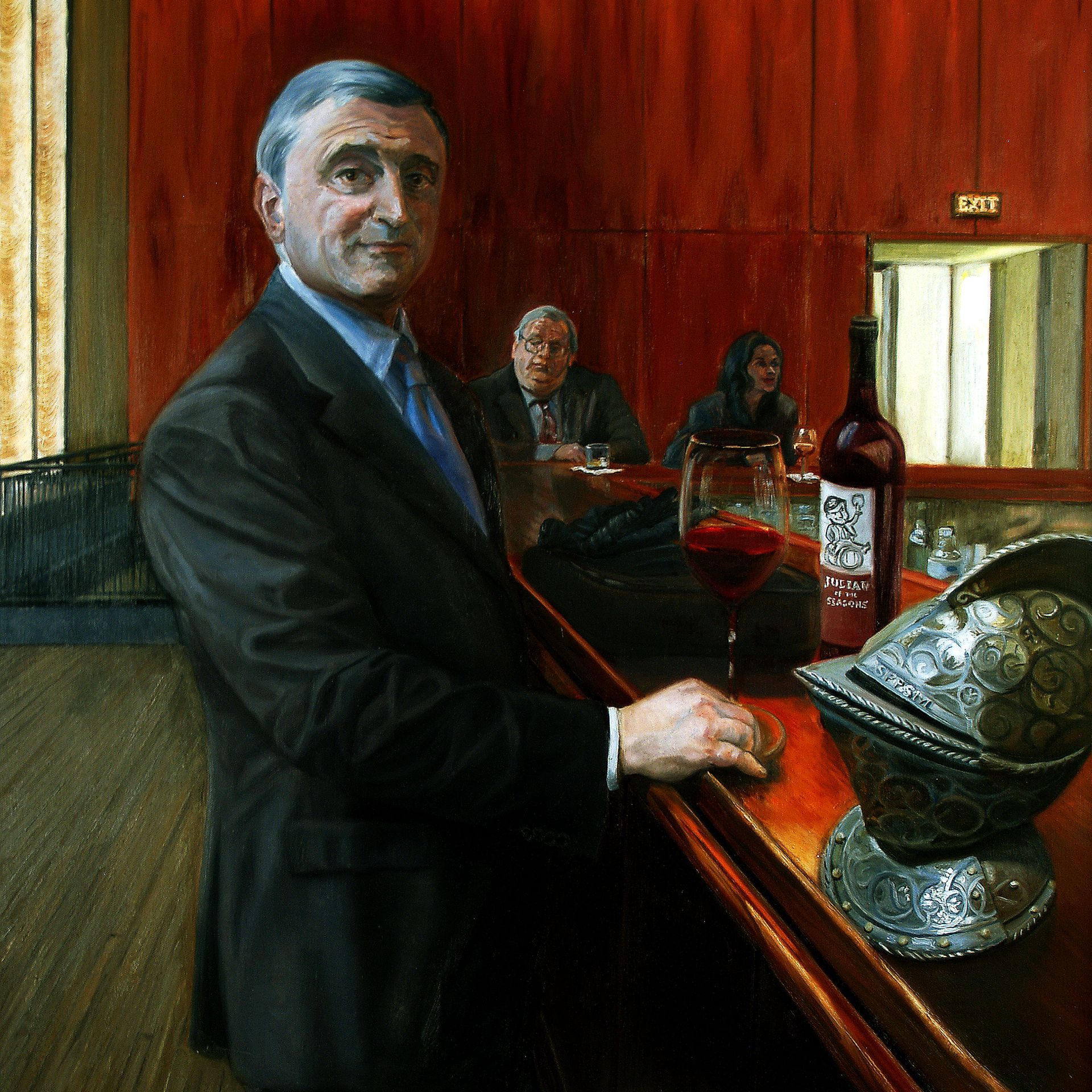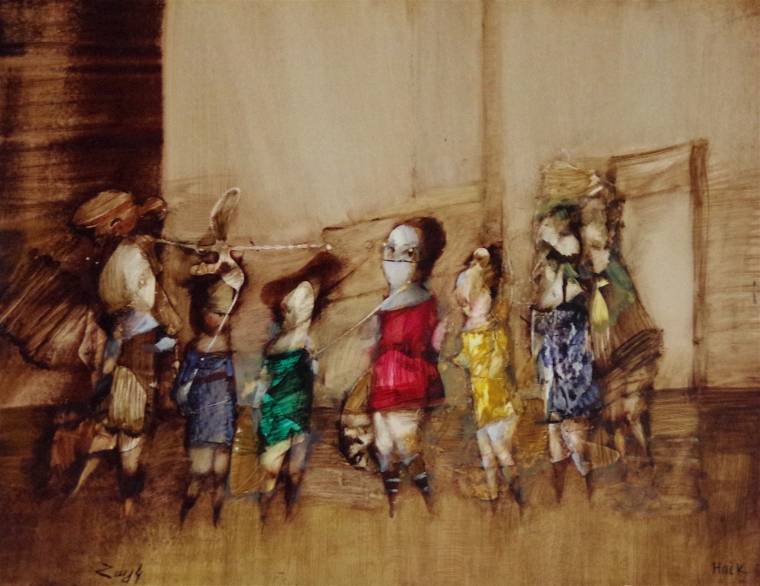The Evolution of Metaphorical Oil Paint: Comprehending Its Historical Value and Modern Interpretations
The development of metaphorical oil painting serves as a compelling lens with which to examine the interaction in between creative expression and historical context. Contemporary musicians, attracting from this abundant heritage, are currently reinterpreting the human figure in ways that challenge conventional stories.
Beginnings of Metaphorical Oil Paint
The beginnings of figurative oil painting can be mapped back to the early Renaissance in Europe, especially in the 15th century. This duration noted a considerable departure from the level depictions and stiff forms characteristic of medieval art. Musicians started to discover naturalism, emphasizing the human number and its emotional expression. The advancement of oil paint enabled greater deepness of color and information, enhancing the realism and vibrancy of their work.

In this transformative age, numbers were often depicted within contextually rich atmospheres, showcasing not just their physical features however additionally their emotional states. Pioneers such as Jan van Eyck and Titian harnessed the medium's adaptability, using layering methods to achieve brightness and appearance. This innovation promoted the portrayal of complex materials and the nuances of complexion, adding to the development of portrait and narrative scenes.
Additionally, the Renaissance emphasis on humanism cultivated an appreciation for distinctiveness, which in turn affected artists to develop more dynamic and relatable figures - figurative oil painting. Consequently, metaphorical oil painting arised as an effective vehicle for storytelling and psychological engagement, preparing for future imaginative activities and styles
Trick Historic Movements
Considerable historic movements have actually shaped the development of metaphorical oil paint, each adding one-of-a-kind approaches and techniques that increased the tool's possibilities. The Renaissance marked a turning point, highlighting realism and the human form, with artists like Leonardo da Vinci and Michelangelo pushing the borders of anatomical accuracy and point of view. Following this, the Baroque period brought significant contrasts of light and darkness, exemplified by Caravaggio, who instilled religious themes with intense emotionality.
The 19th century presented Romanticism and Realism, where artists such as Delacroix and Courbet tested classic ideals, focusing on individual expression and day-to-day life. The introduction of Impressionism additionally transformed the medium by emphasizing the effects of light and color, leading to a separation from standard depiction.
In the very early 20th century, activities like Expressionism and Cubism redefined figurative painting with abstraction and the expedition of emotional deepness. Each of these movements not just showed the social modifications of their times but likewise laid the groundwork for contemporary analyses. The interaction between these historical activities has actually created a rich tapestry of ideologies and designs, influencing modern-day musicians in their pursuit of recording the human experience on canvas.
Techniques and Products Evolution

Throughout the Baroque period, strategies such as chiaroscuro and sfumato emerged, improving the psychological vibration of metaphorical structures. Musicians began to explore lusters and impasto, adjusting appearance and brightness. By the 19th century, advancements like making use of pre-mixed paints in tubes reinvented access, permitting artists to repaint en plein air and catch the short lived effects of light.
The 20th century observed the introduction of artificial pigments and mediums, which expanded the palette and changed the uniformity of oil paints. The exploration of brand-new application techniques, such as scheme knives and brushes of differing tightness, additional diversified imaginative expression. Jointly, these developments reflect the progressing relationship in between products, strategies, and the artistic vision inherent Recommended Reading in metaphorical oil painting.

Contemporary Interpretations
Contemporary analyses of figurative oil painting mirror a vibrant dialogue between custom and innovation, where artists test established standards and explore varied motifs. This evolution materializes in different means, as modern artists mix classical methods with modern ideas, typically dealing with social, political, and individual stories.
Numerous specialists attract ideas from historic works, yet they infuse their pieces with modern viewpoints, making use of the human form as a vehicle for discourse on sex, identity, and society. Artists increasingly try out abstraction, distortion, and combined media, which permits a wider interpretation of the number and its context.
Furthermore, the use of vibrant shade combinations and unusual compositions commonly offers to interrupt typical checking out experiences, prompting essential interaction from audiences. This change in emphasis prolongs past visual appeals; it shows an expanding understanding of the intricacies of human experience in an interconnected globe.
As figurative oil paint continues to develop, it remains an important medium for checking out the nuances of contemporary life, personifying both a respect for heritage and a commitment to dynamic thought. The outcome is a rich tapestry of expression that resonates with the complexities of the modern-day human problem.
Influence On Modern Art
The influence of figurative oil painting on modern art is extensive, as it has continuously influenced a myriad of creative motions and practices throughout the 20th and 21st centuries. From Expressionism to Surrealism and beyond, the exploration of the human figure has stayed a central theme, allowing musicians to share intricate feelings and stories. This focus on figurative depiction has actually resulted in a re-examination of traditional strategies, causing ingenious strategies that blend realism with abstraction.
In addition, modern artists have embraced metaphorical oil painting as a means to resolve social and political issues, using the tool to challenge understandings of identification, culture, and sex. The rebirth of passion in figurative job in recent years mirrors a hoping for link in a progressively electronic globe, where human experience and emotion are vital.
In addition, the discussion between figurative oil painting and modern-day art appears in the works of musicians such as Kehinde Wiley and Jenny Saville, that make use of historical references while infusing their items with contemporary significance. Inevitably, figurative oil painting proceeds to shape and redefine modern creative expression, emphasizing its long-lasting significance in the art world.
Conclusion
The development of figurative oil painting underscores its historical significance and versatility across various artistic motions. From the naturalism anchor of the Renaissance to the stirring expressions of the Baroque and the cutting-edge approaches of modernity, this tool has continually changed. Contemporary interpretations show lively shades and unique structures, promoting vital interaction with political and social themes. Inevitably, figurative oil paint continues to be a crucial medium for discovering the human experience, resonating greatly in today's digital landscape.
The evolution of figurative oil paint offers as an engaging lens with which to check out the interplay in between creative expression and historical context.Considerable visit site historical movements have actually shaped the advancement of figurative oil painting, each adding distinct ideologies and strategies that broadened the tool's opportunities.As historical motions shaped the trajectory of figurative oil painting, the products and strategies used by artists have likewise gone through significant improvements. figurative oil painting.The influence of metaphorical oil painting on modern-day art is profound, as it has actually constantly inspired a myriad of artistic movements and techniques throughout the 20th and 21st centuries.The development of metaphorical oil painting highlights its historical importance and versatility throughout different imaginative activities